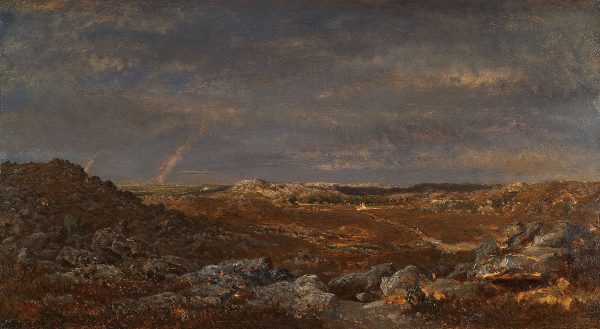The Gorges d’Aprement, Barbizon, 1852
Oil on panel, H. 0.29 m; W. 0.54 m
Signed lower left with his initials TH.R in red
Provenance: Sale Spencer, Fifth Avenue Art Galleries, New York, 28 February 1888, no. 31
Christie’s New York, 24 January 1980, no. 106
Claude Aubry collection, Paris
Exhibited: 1867, Paris, Cercle des Arts, p. 36, no. 75.
M. Schulman, Théodore Rousseau, catalogue raisonné de l’œuvre peint, Paris, 1999, p. 233, no. 396 (ill.).
In the twentieth century, Rousseau’s name has been closely associated with the village of Barbizon. When he settles down there in 1836, he is only 24 years old, but is already well known among artists. He quickly becomes a symbolic figure of the school of Barbizon. Théodore Rousseau developes an appreciation for the French countryside and begins painting landscapes during extensive travels throughout France – Normandy, Auvergne and Jura – in the 1830s and 1840s.
He knew how to print landscapes with a profound and sometimes violent feeling for nature. His intention was to be identified with nature. Switching frequently from romanticism to naturalism, Rousseau anticipated many discoveries of the impressionist movement.
By the changing degrees of light, this wonderful romantic landscape belongs to the best impressionist paintings. The sunset at the end of fall illuminates the mountain in the background, the clouds are present in the sky. A bright palette, the various delicate brushworks, and the spontaneity lay down the ground and the many pale and transparent colours give the effect of matter. The quality of the painting shows Théodore Rousseau’s searches to obtain a new concept of painting.

